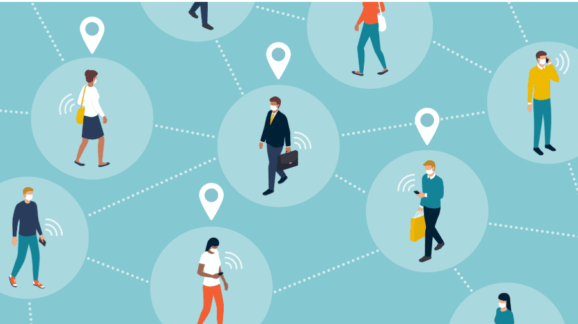Government Contact Tracing Won’t Help Get Americans Back to Work, but Innovation Will
Contact tracing identifies people who have an infectious disease (cases) and people they came in contact with (contacts) who may have become infected.
This classic public health practice identifies and isolates cases and quarantines contacts until it can be determined they are not infected and cannot transmit the disease.
This has long been the province of government health departments, but the COVID-19 pandemic has shown that private enterprises have the incentives and ideas to perform contact tracing faster, more effectively and at lower cost, while protecting the privacy of both cases and contacts.
To reopen and restart our economy, employers must make it safe for workers to return to work. Their immediate goal is to limit absenteeism due to employee illness or fear of returning to work. But classic, government-run, contact tracing is ill-suited to accomplishing these goals for COVID-19.
Historically, contact tracing interviews infected persons to ascertain possible contacts and then employs armies of tracers to track down these contacts. A pandemic already as widespread as COVID-19 will require enormous numbers of contract tracers — 180,000 additional tracers could be needed.
Even if these tracers can be hired and trained, peoples’ memories are highly fallible — they may not remember who they were in contact with or have even be aware of some contacts. Like pandemic influenza, COVID-19 likely has a high rate of pre-symptomatic transmission.
Approximately half of COVID-19 patients are asymptomatic and can transmit the virus to others for an extended period, 14 days or more. In addition, a large number of infected people are pre-symptomatic — they have no symptoms at the time they test positive but go on to develop symptoms later.
Viral loads were similarly high in symptomatic, pre-symptomatic and asymptomatic persons, indicating that both pre-symptomatic and truly asymptomatic people play a role in transmitting the virus.
By the time asymptomatic, pre-symptomatic, or mildly symptomatic cases are identified and isolated, if they are identified at all, the virus will have been widely transmitted. Contact tracing will be delayed and ineffective.
There are too many infected people to think that widespread testing and in-person contact tracing can identify and find every cases’ contacts.
Luckily, private sector initiative and innovation are coming to the rescue. Multiple large companies are exploring novel means to ensure workplace safety and to make contact tracing more efficient.
Amazon has functioned as a safe source of critical supplies to Americans sheltering in place. Their large indoor warehouses employ thousands of workers.
Amazon has supplemented screening employees and mask requirements by repurposing security cameras to identify close contacts of people who test positive to facilitate contact tracing. Amazon is also testing wearable devices that alert employees in real time when they come too close to another.
These techniques can be scaled down for smaller employers to ensure greater workplace safety at minimal marginal cost. It is likely most workers will consent to these measures since they prefer working in a safe, if more intrusive, workplace.
Read the full article at Inside Sources.
